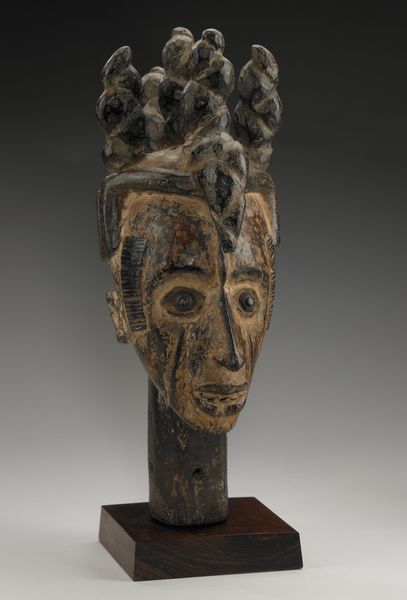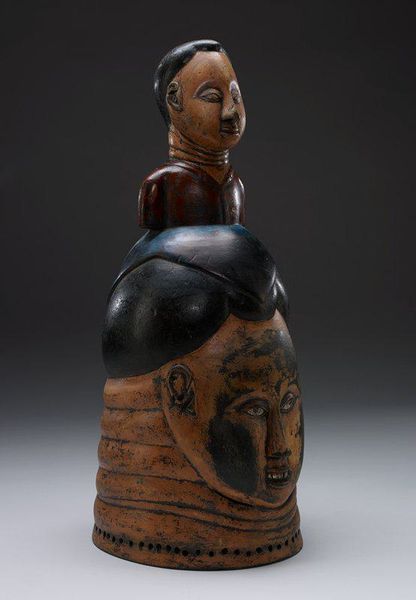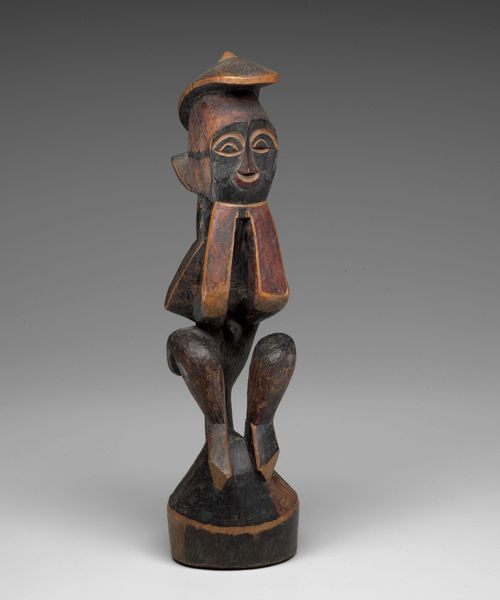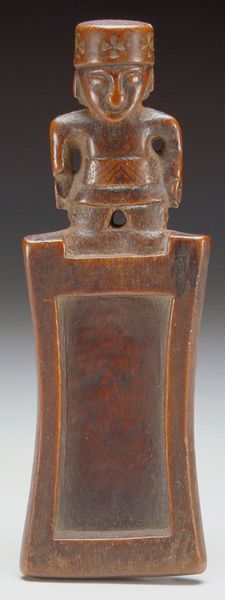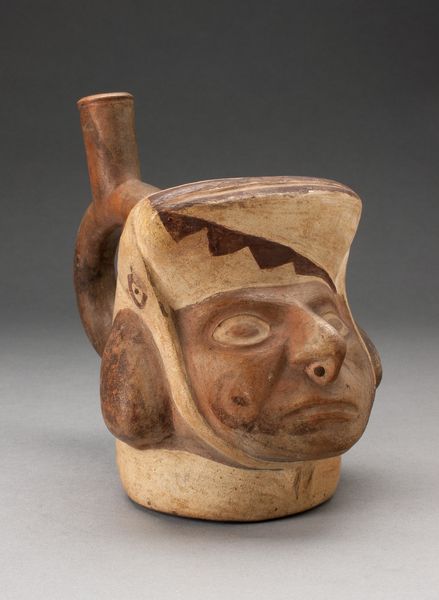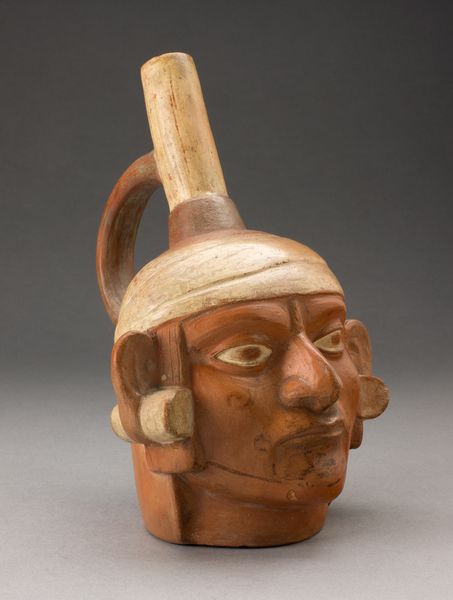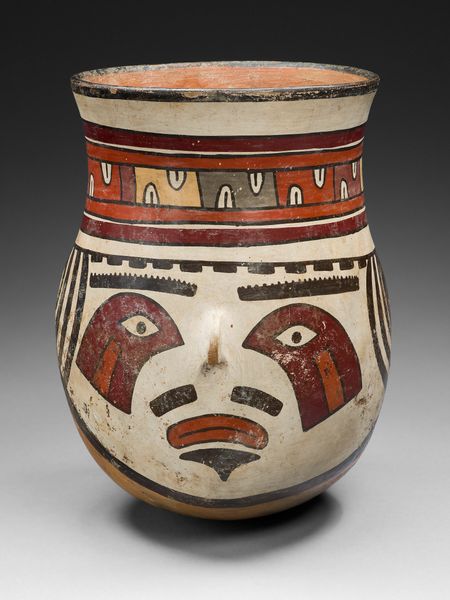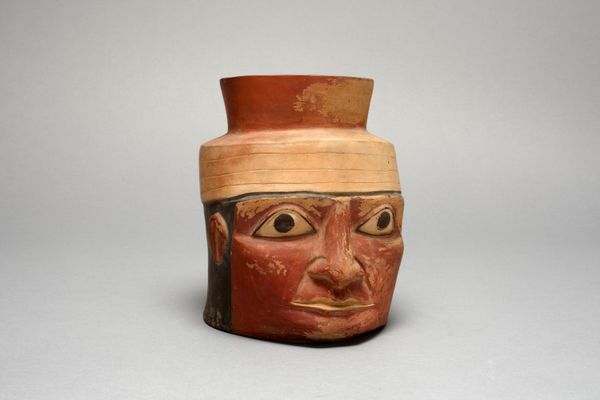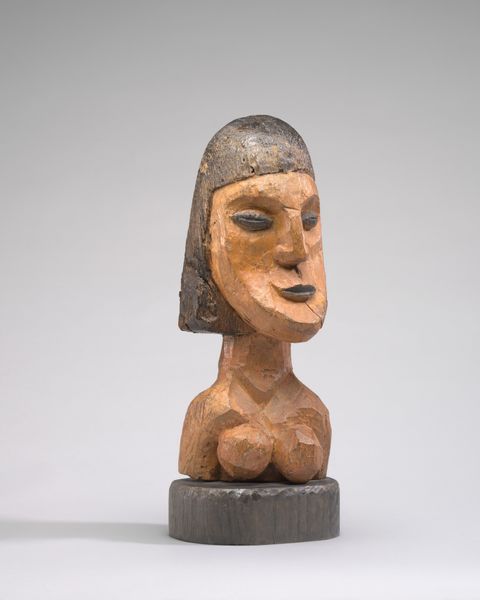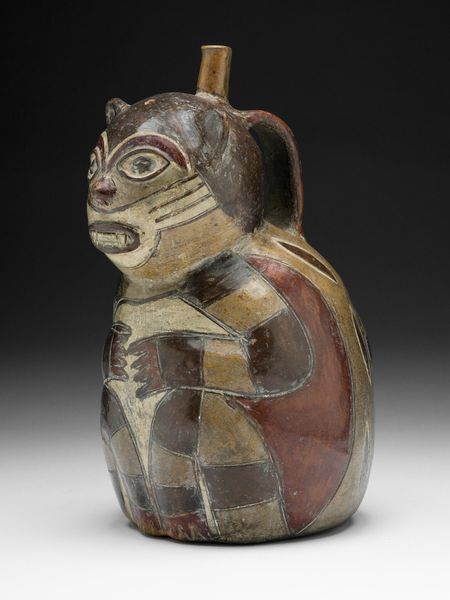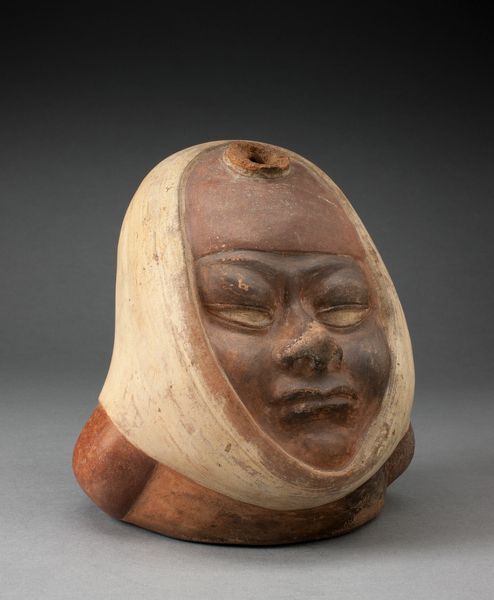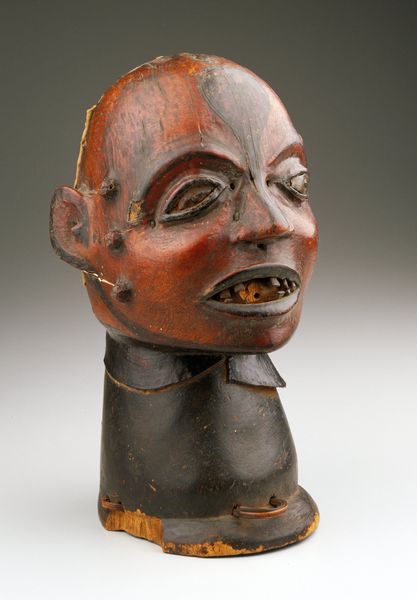
carving, wood
#
carving
#
wood
#
indigenous-americas
Dimensions: 9 x 4 1/2 x 1 7/16 in. (22.86 x 11.43 x 3.65 cm)
Copyright: Public Domain
This object, a painted wooden sewing or tobacco box, was made by an unknown Yup’ik artist from Alaska. The face on the lid is not simply decorative; it is a spirit image that connects the contents of the box to the spiritual world. The Yup’ik are Indigenous people of western Alaska, and their art is deeply entwined with their traditional beliefs and practices. The face on the lid is framed by black lines, which draw attention to the features, especially the eyes, which are the windows to the soul in many cultures, including that of the Yup’ik. Boxes like these are not just containers; they are cultural objects that encode Yup’ik values and beliefs. They would have been used for storing precious items like needles, thread, or tobacco, all of which had economic and social value. The box is a testament to the ingenuity and artistry of the Yup’ik people, who have adapted to the harsh environment of the Arctic for thousands of years. Examining Yup’ik ethnographies and historical accounts can reveal the depth of the beliefs that inform the design of this box. It is through this kind of research that we can better understand the role of art in the social and spiritual life of the Yup’ik people.
Comments
minneapolisinstituteofart almost 2 years ago
⋮
Although it is unclear what the function of this object was and what the small containers in the sides held, it is an excellent example of the Yup'ik artistic tradition. In the Yup'ik worldview, there is a fine balance in the physical and spiritual worlds as well as the cosmos. These beliefs are reflected here by the representation of the two faces; one with an upturned mouth, the other with a down turned one. This typical Yup'ik duality exists between sky and sea, light and dark, and male and female. The male face has a mustache and goatee; the female is illustrated by facial tattoos on the lower lip. The images have been placed back-to-back, showing that the opposites are meant to be together. This type of imagery can also be found on wooden plaques that were attached to kayaks, which would insure safe passage.
Join the conversation
Join millions of artists and users on Artera today and experience the ultimate creative platform.
